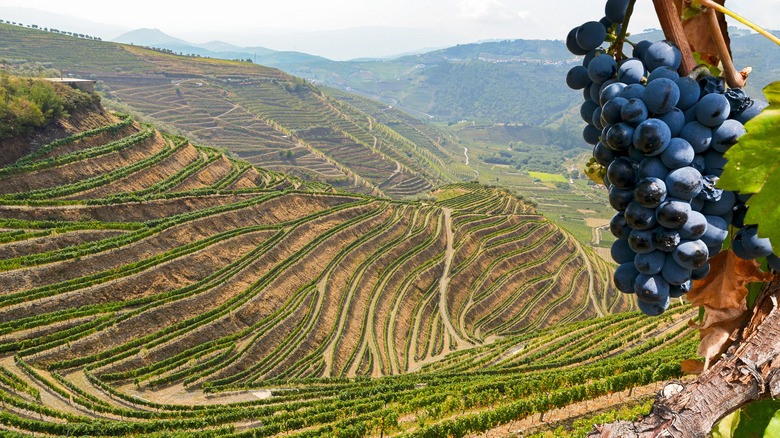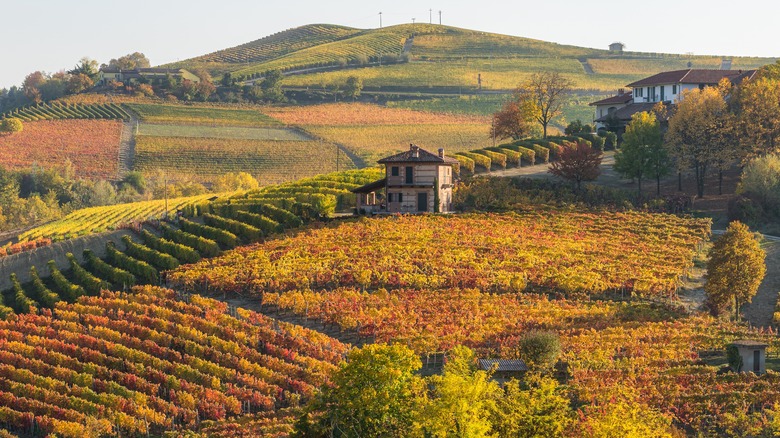Why Elevation Impacts The Flavor Of Wine
You'll find them floating in a valley of fog, rolling over verdant green hills row upon row, and even on the slopes of the rocky outcroppings of a mountain peak. Vines are everywhere — grape vines, that is, stretching their roots sometimes dozens of feet to reach a source of water. Today, it seems like every state and a growing number of countries are planting wine grapes with the hope of creating the world's next great wine region, and some people are willing to plant just about anywhere.
According to the Bonner Private Wine Partnership, the vineyard that sits at the highest elevation in the world is in Tibet, located on the northernmost side of the Himalayan mountain range, at a whopping 11,000 feet above sea level. Unfortunately, the wine isn't all that palatable. Whereas Médoc in Bordeaux, France is one of the lowest elevations and is known to produce a lot of Cabernet Sauvignon and Merlot (via Wine Tourism).
Higher or lower elevation doesn't necessarily dictate whether the wine will taste more complex, flabby, watery, juicy, or minerally, but it does have an undeniable effect on those characteristics. And depending on what kind of grapes you plant and what climate in which you plant them, elevation can make quite a difference in the wine.
Thick skin
Choosing optimal vineyard locations has become especially important in a world experiencing dramatic climate change, and elevation in wine growing is more often than not viewed as desirable. Grapes Extension tells us that planting a vineyard at high elevations generally provides better airflow. This proves beneficial in preventing common fungal growth and also reduces the chance the leaves and berries will be subject to freezing since lowland areas trap cold air. Higher elevation also means that there will be better water drainage. Too much standing water destroys small roots and prevents nutrient intake, giving the grapes a watery, less complex flavor. So, picking the appropriate elevation for your vines is the key to nuanced, and undamaged fruit.
But what other effects does higher elevation have on wine grapes? According to Stone Street Wines, it has a lot to do with the grapes' skin. The thicker the skin wine grapes have, the bigger and bolder the tannin structure and color. The higher the vineyard is situated, the more direct sunlight the grapes recieve with greater intensity and temperature than if they were growing at a lower elevation. The ultraviolet light is multiplied by 10% or more every 1,000 feet above sea level one goes, so the grapes at high elevations grow a thicker skin to handle the direct UV rays and the fluctuating temperatures better.

